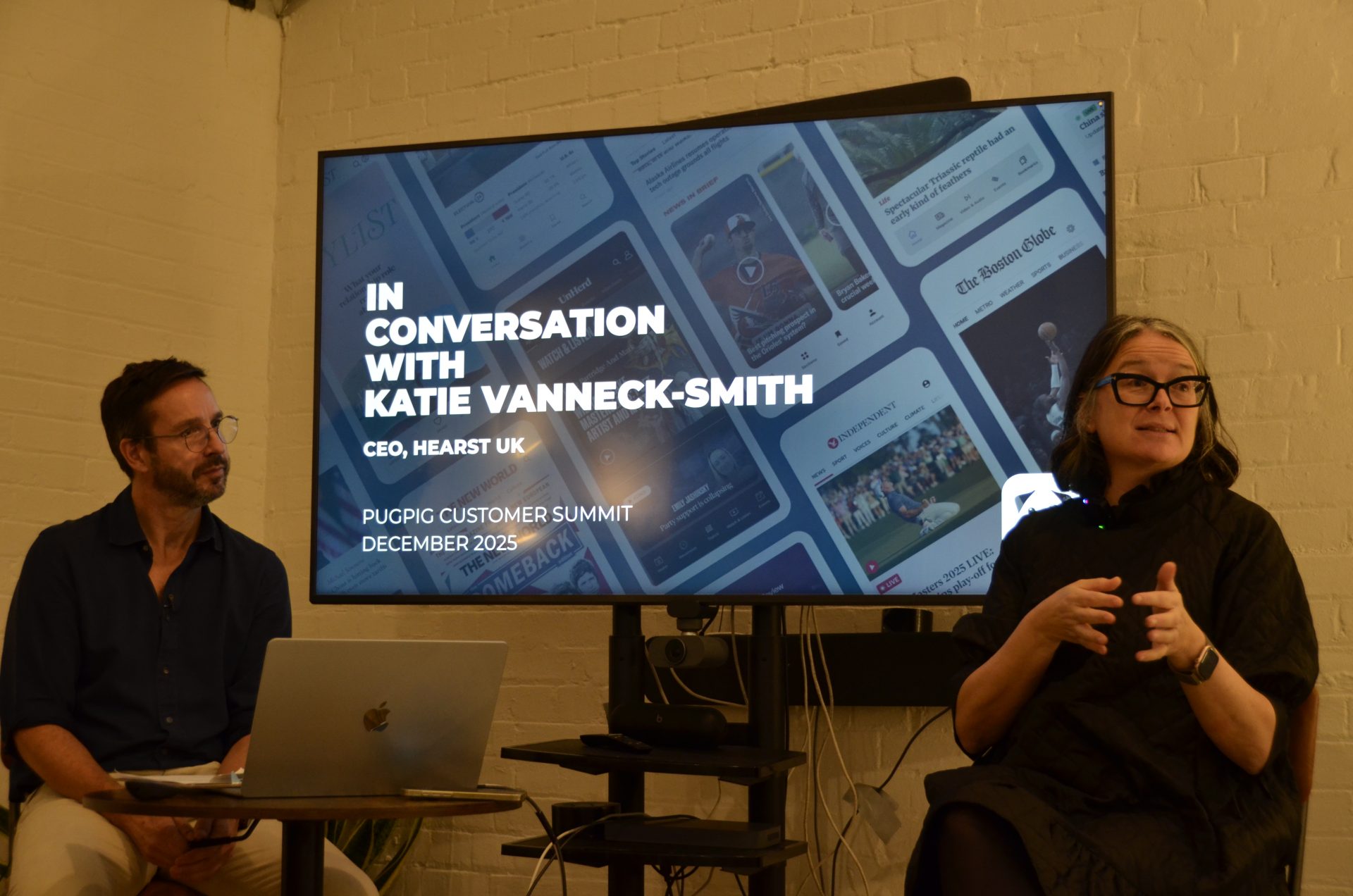
Newsletter
Newsletter
Fortune’s Chief Customer Officer discusses diversity, cross-functional teams, measuring what matters and focusing on engagement over growth.
11th August 2023

In the Pugpig weekly media bulletin, Pugpig’s consulting services director Kevin Anderson and digital growth consultant James Kember distill some of the best strategies and tactics that are driving growth in audiences, revenue and innovation at media businesses around the world.
If you would like to learn more about how Pugpig consulting could help you, or have any questions or feedback, please email us at info@pugpig.com.
By Kevin and James
The fortunes of publishers have been diverging over the last 18 months as a rocky ad market and the end-game of the platform era have disrupted revenue and audience operations for those companies focused on reach. At the same time, publishers with a foundation built on reader revenue and diversified product portfolios and revenue streams are not only weathering the storm but look to be in a dominant position coming out of this period of inflation and economic uncertainty.
The work of building a successful media company is both operational and cultural, and Lennart Schneider from the Subscribe Now podcast and writing for The Audiencers discussed an interview he hosted with Selma Stern, Chief Customer Officer at Fortune. The conversation is a good reminder of how having the wrong KPIs can lead to the wrong outcomes for a business and that no matter how solid your KPIs are that the success of achieving those goals comes down to the teams that deliver them. Silos and a lack of diversity in backgrounds, thinking and skills are a recipe for frustration, friction and failure.
Stern’s experience from the US was that, generally, teams were more diverse in the States than in Germany. She noted that for her, diversity didn’t just apply to gender and ethnicity but also “specialist expertise” and it allowed them to challenge each other’s beliefs and achieve “successes that previously seemed impossible”.
The benefits of diverse teams are undeniable and have been supported by numerous studies. An article from The Fix by Anastasiia Shevchenko lists several of the reasons that businesses should prioritise diversity, and she comes to a similar conclusion to Stern’s that it is “good for team performance”. Shevchenko also makes the case that news organisations with a more diverse workforce will find it easier to improve trust in their content. This in turn improves engagement and long-term, durable connections with readers that are key to successful subscription businesses.
Stern also pointed out that traditionally publishing organisations have been “characterised by sequential workflows”, which no longer work in a digital world. This is an issue that’s not unique to publishing and indeed also impacts newer, digital-only publishers. Digital-first media companies aren’t burdened with traditional working methods but still need to guard against replicating print-based working habits from the past. Stern saw it as her responsibility as the Chief Customer Officer to get people in different silos to talk to each other and to establish cross-functional processes.
Schneider also highlighted bridge roles – staff who work across multiple project areas but also coordinate across functions. Another well known concept is the notion of forming cross-functional teams or squads to work on certain project areas. These teams will generally work more efficiently to increase the ability of the organisation to respond quickly to changes in the environment, according to Delloite.
For Stern, the industry was too focused on reach and “forgot about sales”, resulting in teams being incentivised for the wrong goals. A focus on reach encouraged publishers to focus on casual audiences with minimal engagement with the brand or the business, leaving publishers with little revenue to show for these efforts.
Through our work with Pugpig consulting customers we have observed a range of different approaches by publishers to monetise their audience, from large reach-driven advertising models to hard paywalls. However, we are in agreement with Stern that business models that rely on high volume, low quality traffic will struggle to survive. We’ve previously written about the demise of BuzzFeed News, which had a fundamental disconnect between its social media-driven audience model and its aspirations (and costs) of running a high quality news operation. Furthermore, its reliance on Facebook left it vulnerable as the platform pivoted away from news, and this hit both digital darlings and large traditional publishers such as Reach in the UK. Regulatory pressures and weakness in advertising over the past 18 months have meant platforms want to capture audience attention and are even less willing to drive referrals to publishers. The most extreme case of this being in Canada where Meta is blocking referrals to news sites in response to new legislation in the country that was designed to force platforms to negotiate with news publishers to pay them for linking to their news content.
Stern’s thesis was that publishers should invest in building customer loyalty. Whether a business is ad-supported or focused on reader revenue, unknown audiences only loosely tied to your brand are very difficult to monetise. We recently focused on how publishers need to focus on audience regularity rather than pageviews to drive subscription growth, discussed the importance of a different relationship with the audience and have looked at how publishers can use bundles to drive value. Needless to say, this is something we strongly believe in too.
We think that another point that Stern makes is the importance of data in developing a user-focused culture. Without data, a business is vulnerable to HIPPO decision-making – decisions based on the Highest Paid Person’s Opinion. It not only leads to poor business outcomes, but it contributes to a business culture that struggles to retain talent because people whose job titles don’t include a C feel ignored and undervalued.
Too often, editorial paywall strategies are “based on experience and gut feeling”, Stern said, with content deemed to be of high value locked whilst “quick, interchangeable” articles are kept free. Other content-led paywall subscriptions operate in the binary between hard and metered paywalls. But does the data support those content-led strategies?
Paywalls that determine whether a user sees the subscription prompt based on defining every article as either ‘free’ or ‘premium’ are not the most efficient driver of subscription, Stern said. Instead, a user’s propensity to subscribe is determined by behaviour, rather than content, she added. Therefore, she suggested taking a dynamic approach where regular visitors should see the paywall often but sporadic users should get the same article for free before being gently being prompted to sign up.
However, we believe that content should be considered, given that it is often one of the few data points available for casual visitors. Although we agree that experiences that rely on free and premium content classification without a robust data and analytical approach are often suboptimal.
So how to implement a better paywall strategy? The Audiencers point out that dynamic paywalls don’t need to be complicated. At Pugpig we’ve seen publishers get significant results by testing simple strategies and challenging assumptions of the best time, place and frequency of subscription messaging. Ultimately the key is to not make any assumptions and continually test and optimise, whilst keeping it simple.
Here are some of the most important headlines about the business of news and publishing as well as strategies and tactics in product management, analytics and audience engagement.

Newsletter

Newsletter

Newsletter

Newsletter

Newsletter